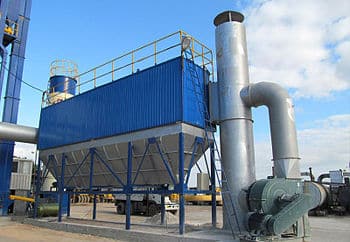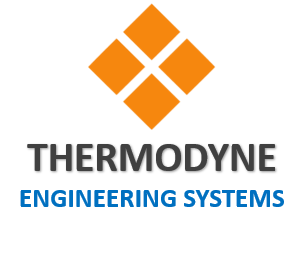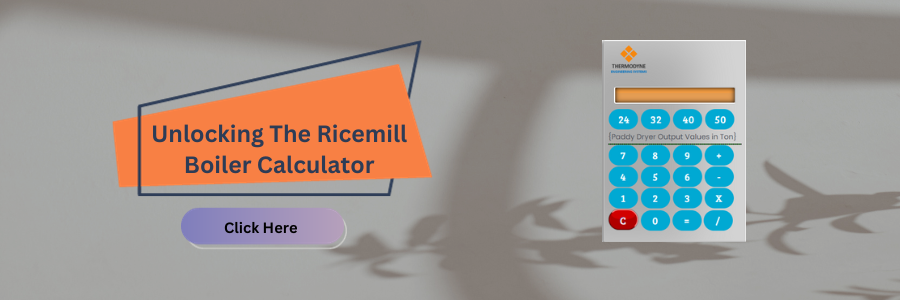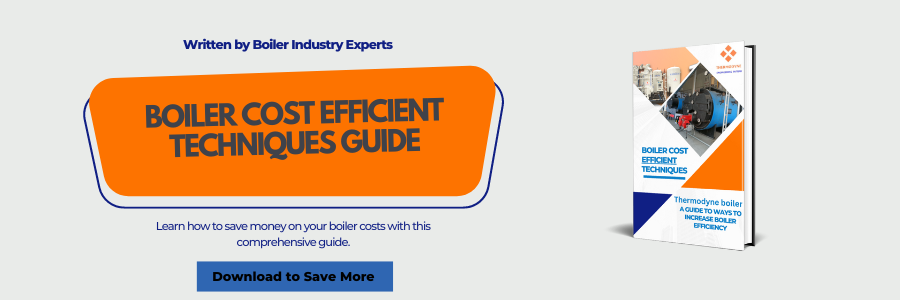Table of Contents
What is an Dust Collector System?
Industrial dust collectors are air pollution control equipment used in factories, plants, and warehouses to remove dust and other impurities from the air. They are essential for protecting workers’ health and safety, as well as for complying with environmental regulations.
Dust collectors work by drawing air through a filter. The filter captures the dust and other impurities, and the clean air is then discharged back into the environment. There are many different types of dust collectors, each designed for a specific application. Some of the most common types of dust collectors include:
- Baghouse dust collectors: These are the most common type of dust collector. They use a series of bags to filter the air.
- Cyclone dust collectors: These collectors use centrifugal force to separate the dust from the air.
- Wet scrubbers: These collectors use water to wash the dust out of the air.
- Electrostatic precipitators: These collectors use an electric field to attract the dust to plates.
Dust collectors are used in a wide variety of industries, including woodworking, agriculture, food processing, pharmaceutical, recycling, cement and rock products, metal fabrication, mining, and chemical processing. They are essential for maintaining a safe and healthy work environment, and for complying with environmental regulations.

Some additional details about dust collectors:
- They can be used to collect a variety of dusts, including sawdust, metal shavings, plastic fines, and chemical powders.
- They can be used to collect dust from both stationary and mobile sources.
- They can be used to collect dust from both large and small areas.
- They can be used to collect dust from both high- and low-pressure systems.
- They can be used to collect dust from both wet and dry environments.
Dust collectors are an important part of any industrial safety plan. They can help to protect workers’ health, prevent fires, and reduce pollution. If you are considering using a dust collector in your workplace, be sure to consult with a qualified professional to choose the right type of collector for your needs.
Industrial Dust Collector System Parts
- Dust Collector Hoods
- Dust Collection Ductwork
- Air Material Separators
- Explosion Protection Equipment
- Rotatory Air-Locks
- Rotary valves
- Motorized valves
- Pneumatic Valves
- Trickle valves
- Dust Collector Exhaust Fans
Components Examination of Dust Collection System
Dust Collector Hoods / Industrial Dust Hood
Small modifications in dust collector hood designs usually produce big results mainly in performance and total cost of operation. Check:
- Blown, ripped, or broken filter media,
- Check if it has warped or cracked filter assembly,
- Test airflow speed to make sure they are getting the designed airflow.
- Inaccurate installation of a filter component,
- Do a visual investigation to make sure they haven’t been destroyed during the year.
- A separated bag filter or a mechanical breakdown of the tube sheet due to abrasion
- If a restricted damper is found by hood for balancing, make sure it is operating in the right position.
Dust Collection Ductwork
Ductwork is used to take the dirt & air from the gathering point to the collector. It must be sized correctly to create a “carrying velocity” to keep dust moving through.
- Do an actual inspection to make sure no leaks have occurred.
- Calculate air velocity through ductwork to make sure intended airflow is accurate.
- Examine duct interiors to make sure dust isn’t growing up.
Air Material Separators in the dust collection system
An air material Separator is a part that departs air used for moving from the element it conveys. It is a machine designed to divide the conveying air from the material being conveyed. To keep it working properly
- Examine the pressure drop across the separator to understand if it is within parameters.
- Scrutinize cleaning process to see if they are working properly Check the timing, valves opening, air pressure, etc. See the guidance and maintenance handbook. Usually, monitoring the system will let you know if it is working correctly.
- Monitor recycled line weight and outlet in wet scrubbers.
- Visually inspect the vessel walls to be sure there are no cracks.
Explosion Protection Equipment
An explosion is a severe risk at many constructions, processing, and metalworking factories. It can even originate from a dust collection system that’s preserved incorrectly. A properly designed dust collector that manages combustible dust always holds an explosion protection system. The purpose of any type of explosion protection equipment is to restrain an explosion and reduce damage.
- According to NFPA, it needs yearly inspection. Following the manufactures manual for the explosion protection equipment will preserve the tools and equipment as it was designed.
- Some explosion protection such as chemical suppression should be performed by industry qualified personnel.
- Visually inspect that the vent closure is on point and able to work as intended.
Dust Collector Rotary Airlock
An airlock separates the dust collector hopper from the outside while letting the collected dust to exit the system. Usual airlocks are rotary valves, trickle valves, double dump valves, and knife gates.
Rotary valves
The main purpose of a rotary airlock valve is to give an air seal at the outflow opening of the dust collector hopper. Rotary airlock valves are usually installed between the hopper flow and a conveyor or release bin. To check if it is working properly:
- You should check it to see they are still rotating
- The valve body and rotor blades on a rotary airlock valve require regular inspection for wear and replacement determination.
- Grease the parts regularly and examine temperature to make sure they aren’t overheating.
- On explosive applications, the rotor removal should be regulated to make sure it still stands with NFPA 69.
Pneumatic Valves
- To make sure the pneumatic valves in dust collector are working properly, follow steps:
- You need to test valves to make sure they are still working as meant.
- Measure Air pressure to be sure that it still follows the design parameters.
Motorized valves
- To make it work properly, grease the parts regularly.
- Measure bearing temperature to be sure they aren’t overheating
Trickle valves
Trickle valves, also known as vacuum valves, are generally used in manufacturing dust collection applications to manage an airlock seal on a dust collector tank while providing bulk solid material to be automatically discharged. To maintain:
- Inspect the cover to know it is sealed.
- During the process, verify that material is still flowing and the matter hasn’t bridged above it.
Instrumentation
The dust collection system consists of many parts and instruments. It has a huge list of components that help a dust collector to work properly. to make sure it works properly:
- Do separate examination for Level gages, pressure gages, VFDs, pH meters, zero speed switches, etc. It asks for a different maintenance procedure.
- Follow the handbook of the particular model for maintenance and review.
Dust Collector Exhaust Fans
Dust collection systems need an exhaust fan to stimulate ventilation air from the position of pick-up, through the ductwork and dust collector filter tools and from the exhaust stack. For maintenance
- The fan installation needs to be inspected to see there are no holes.
- The charge and amps should be regulated to make sure it is working at its planned condition.
- The parts need to be lubricated and temperature needs to be checked so they aren’t overheating.
- The fan’s wave should be reviewed along with monitoring to see if any unusual noise is arising from the fan.
Dust Collector System Maintenance Checklist
This is not an all-inclusive list but we have covered all major points when it comes to Dust Collector System Maintenance, You can make a Dust Collector System Maintenance Checklist based on the information listed in this article.
Each part of the industrial dust collection system is different, and each has its components and characteristics. But these simple plans can help you monitor and manage your dust collector’s heath, as well as limit shutdowns due to incompetence, increase filter life and prevent costly EPA fines. To increase efficiency and security, there is no backup for an on-site review by an expert.
Industrial Dust Collection System Parts & Guide to Examine and Maintain Components FAQ
A dust collection system typically consists of a dust collector, a duct system, and a filter. The dust collector is the heart of the system, and it is responsible for collecting the dust from the air. The duct system transports the dust from the source to the dust collector. The filter removes the dust from the air before it is released back into the environment.
Dust collection systems can provide a number of benefits, including:Improved air quality: Dust collection systems can help to improve air quality by removing harmful dust particles from the air. This can help to reduce the risk of respiratory problems, such as asthma and allergies.
Increased productivity: Dust collection systems can help to increase productivity by reducing the amount of time that workers spend cleaning up dust. This can lead to increased production and decreased costs.
Improved safety: Dust collection systems can help to improve safety by reducing the risk of fires and explosions. This is because dust can be a fire hazard, and it can also create an explosive atmosphere.
There are a number of different types of dust collection systems available, including:Portable dust collectors: Portable dust collectors are small and easy to move, making them ideal for use in small workshops or on construction sites.
Centralized dust collectors: Centralized dust collectors are larger and more powerful than portable dust collectors. They are typically used in large industrial settings.
Wet scrubbers: Wet scrubbers use water to remove dust from the air. They are often used in industries where the dust is wet or oily.
Baghouses: Baghouses use a series of filters to remove dust from the air. They are often used in industries where the dust is dry or dusty.
When choosing a dust collection system, it is important to consider the following factors:The type of dust that needs to be collected
The size of the area that needs to be covered
The amount of dust that is generated
The cost of the system
Dust collection systems should be installed and maintained by qualified professionals. This is to ensure that the system is installed correctly and that it operates properly.
The most common problems with dust collection systems include:Clogged filters
Broken belts
Overheating
Electrical problems
If you are having problems with your dust collection system, it is important to troubleshoot the problem to determine the cause. Once the cause of the problem is known, it can be corrected.
There are a number of things that you can do to improve the efficiency of your dust collection system, including:Keep the filters clean
Replace the belts regularly
Inspect the system for damage
Operate the system at the correct capacity
There are a number of things that you can do to reduce the cost of operating your dust collection system, including:Choose a system that is the right size for your needs
Purchase a system that is energy efficient
Operate the system at the correct capacity
Keep the filters clean
Replace the belts regularly
Inspect the system for damage
Dust collection systems have a number of environmental benefits, including:
Reduced air pollution. Dust particles can contribute to air pollution, which can have a number of negative health effects, including respiratory problems, heart disease, and cancer. Dust collection systems can help to reduce air pollution by capturing dust particles before they can enter the atmosphere.
Reduced water pollution. Dust particles can also be washed into waterways, where they can pollute the water and harm aquatic life. Dust collection systems can help to reduce water pollution by capturing dust particles before they can reach waterways.
Reduced greenhouse gas emissions. Dust particles can trap heat in the atmosphere, which contributes to climate change. Dust collection systems can help to reduce greenhouse gas emissions by capturing dust particles before they can trap heat.
Reduced waste disposal costs. Dust collection systems can help to reduce the amount of waste that needs to be disposed of. This can save businesses money on waste disposal costs.
Improved worker health and safety. Dust particles can irritate the eyes, nose, and throat, and can also cause respiratory problems such as asthma and bronchitis. Dust collection systems can help to improve worker health and safety by reducing exposure to dust particles.
Overall, dust collection systems can have a number of positive environmental benefits. By reducing air pollution, water pollution, greenhouse gas emissions, waste disposal costs, and worker health problems, dust collection systems can help to improve the environment and protect human health.
In addition to the environmental benefits, dust collection systems can also provide a number of other benefits for businesses, including:
Improved product quality. Dust particles can contaminate products, leading to reduced quality and increased customer complaints. Dust collection systems can help to improve product quality by removing dust particles from the air.
Increased productivity. Dust particles can create a hazardous work environment, leading to increased absenteeism, decreased productivity, and increased workers’ compensation claims. Dust collection systems can help to increase productivity by creating a safer and healthier work environment.
Improved safety. Dust particles can create a fire hazard. Dust collection systems can help to improve safety by removing dust particles from the air and reducing the risk of fires.
Overall, dust collection systems can provide a number of benefits for businesses, both environmental and economic.




